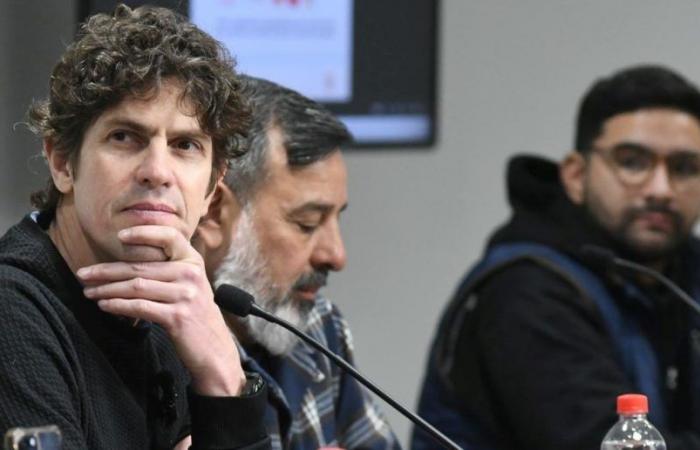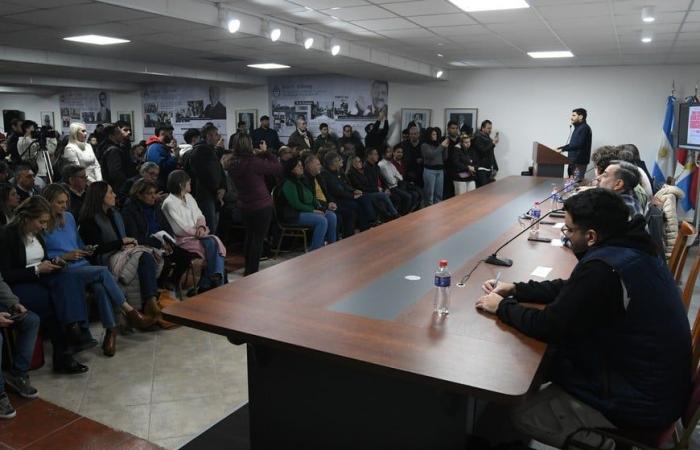Updated at Saturday 29.6.2024 15:34hs
“Radicalism moves forward with more internal debate, with more dialogue. The long-term duty is the responsibility of the political parties” repeated Martín Lousteau this Friday and Saturday in the different meetings he held with radical leaders from Santa Fe and other provinces who came to this capital to participate in the first plenary of radical organizations.
The Buenos Aires senator arrived in this capital on Friday and had dinner with Governor Maximiliano Pullaro and some of his ministers. The man from Buenos Aires constantly repeats that Pullaro is the best candidate for president that radicalism has and together with the president and the head of the UCR, Felipe Michlig, they opened the meeting at the remodeled headquarters on Rivadavia Street. The president then went on a tour of the Caseros department.
The Radical Youth, the Purple Strip, the Organization of Radical Workers, the Forum of Radical Mayors and the UCR Diversity convened this large plenary session to present ideas, share experiences and add proposals for the construction of a modern partisan public discourse, with a vision of future and vocation for power. “It is very necessary to meet, to think about a game for this 21st century,” Lousteau told them. He reviewed the birth of the party at the end of the 19th century, the value of radicalism in the recovery of democracy in 1983 with Alfonsín as president and now the need to discuss the upcoming project.
In the meetings with leaders, he was critical of the economic program drawn up by President Javier Milei but did not speak of a partisan rupture due to the different vote that radical legislators had in both chambers on the so-called Bases law and the fiscal package. He himself voted differently from the bloc of radical senators, which caused surprises in politics and rupture readings. For the man from Buenos Aires this is not the case and he even understands the different governors when it comes to how they position themselves before the national government taking into account that they often share the vote. He highlights that Corrientes has gubernatorial elections next year and that is why Gustavo Valdes must take care of the hegemony of the current front given the possibility that La Libertad Avanza has a candidate. The same is true in conservative Mendoza, where the reduction in the votes of the Kirchnerized PJ will give impetus to a possible alliance between conservatives and radical followers of today’s minister Luis Petri. Hence Lousteau understands Governor Cornejo’s movements.
In CABA the outlook for next year does not appear clearly, especially due to the division of the Pro and the implosion of Together for Change. On the other hand, the radical leader warns that they cannot go close to Milie in the province of Buenos Aires because it could mean the disappearance of the party.
He avoids talking about the internal situation in Santa Fe but is convinced of Pullaro’s potential with national projection when he decides. “Santa Fe is the largest province that is currently governed by the UCR and with an excellent governor who is carrying out the promised program, walking the province, alongside his people” he said at the opening of the plenary session.
The senator also left his fellow party members with the idea that the political system will begin to be reorganized by the end of the year. “The current crisis is not only for the UCR, it is also for the PJ and the Pro” he said, calling for work to find a party identity for the 21st century.
The Santa Fe meeting was used by Lousteau to speak with representatives from several provinces who joined the debate to continue analyzing the national map. There was, among others, the vice president of the national committee, Inés Brizuela y Doria, from Rioja, who expanded in the hallways about the union between La Libertad Avanza and Menemism, which has the western province as its axis.
“Social transformations are built with participation and broad-mindedness, and allow for innovation and the development of new strategies. For this reason, this call for the five auxiliary organizations officially recognized in the Party’s Organic Charter seeks to become another opportunity to build bridges for participatory and plural development,” the call states.
Between the morning and the late afternoon, differentiated blocks of presentations of ideas and thematic proposals of each organization were planned, together with the contributions of the participants in different discussions. This first Plenary of Radical Organizations was in Santa Fe to commemorate the 30 years of the Constituent Convention that sanctioned the 1994 Reform in this city.
Example Santa Fe
Felipe Michlig, at the opening of the meeting, insisted on explaining to those present what the decision was like to form the Unidos alliance in Santa Fe. “Now I have a new dream, which is to have a president of the radical Nation and of Santa Fe.”
He pointed out that in Santa Fe there is a “government with presence, visibility, proposal. Pullaro fills us with pride. I didn’t want to die without seeing a radical governor and now I want a radical president in Argentina, we have strength, values, convictions, he said passionately ”before the crowded plenary session. “I am convinced that the new president of the Argentines will emerge from Santa Fe. Let this meeting be the starting point in this march. Welcome, let’s work in unity thinking that by sharing the same values, we can give our best. The Argentines ask for alternatives outside the crack, and we are there,” he challenged.



